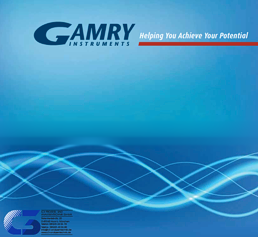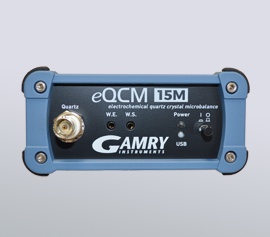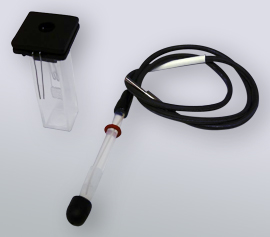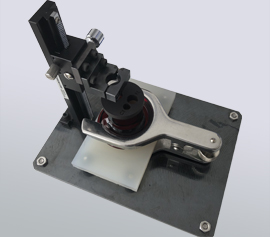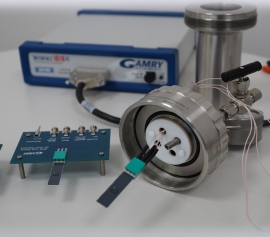POTENTIOSTAT / GALVANOSTAT
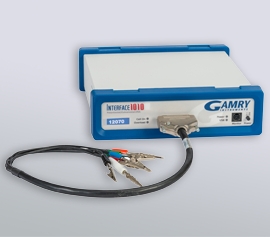
The Interface 1010 is a value oriented, general purpose potentiostat for almost all applications except for high current electrochemistry.
The "T(eaching)" version of the Interface 1010 can be purchased flexibly at a low entry level budget for almost all applications in electrochemical research and -industry. Later, if requirements increase, existing electronic components with higher specifications can be activated by means of a paid upgrade.
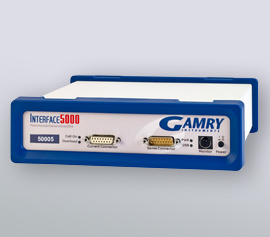
The Interface 5000 Potentiostat / Galvanostat / ZRA is a compact, inexpensive system for material development and condition testing of batteries, super capacitors and fuel cells
The Interface 5000 delivers a higher current of ± 5A in direct comparison with the Interface 1010. The maximum available working electrode potential is ± 6V. The additional electrometer allows the simultaneous tracking of both half cells of a battery, a supercapacitor or a fuel cell when using an embedded reference electrode including the whole cell in a single experiment. Due to this time saving additional experiments can be scheduled.
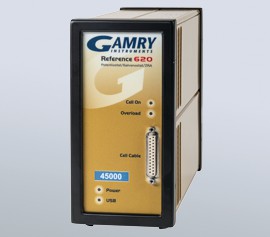
The latest development in the Reference 600 series - the Reference 620 - features 20-bit analog/digital conversion, gaining about a decade of additional sensitivity. This makes the system the first choice for demanding applications, e.g. in basic research.
The Reference 620 offers eleven current ranges between 60 pA - 600 mA at a maximum of ± 12 V at the working electrode. Two additional gain stages (10x / 100x) extend to an even broader current range of 13 decades, allowing electrochemical impedance spectroscopy (EIS) on very high ohmic surrogates between 5 MHz and 10 µHz with current resolutions down to 20 aA per bit using state-of-the-art microelectronics and oversampling. Careful selection of electronic components and design result in...
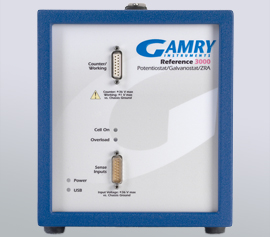
The high-end potentiostat for all demanding applications in electrochemistry from very low to high currents.
The Reference 3000 offers eleven current ranges between 300 pA - 3000 mA at a maximum of either ±3A@±15V or ±1.5A@±32V at the working electrode. Two additional gain stages (10x / 100x) extend to an even broader current range of 13 decades, allowing electrochemical impedance spectroscopy (EIS) on very high ohmic surrogates between 1 MHz and 10 µHz with current resolutions down to 100 aA per bit using state-of-the-art microelectronics and oversampling. Careful selection of electronic components and design result...
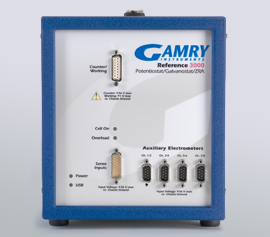
The well-known high-end Reference 3000AE Potentiostat/Galvanostat/ZRA with eight additional auxiliary electrometers (AE).
With the eight additional channels of the Auxiliary Electrometer (AE) add-on option of the Reference 3000 Potentiostat / Galvanostat / ZRA, potential differences of either eight individual half cells of a stack or up to eight peripherical signal transducers can be measured. Each of the eight available electrometers (± 5 V vs. counter electrode potential) can clarify the impedance of a half cell in an electrochemical impedance spectroscopy measurement performed over the entire stack or to simply measure eight additional...
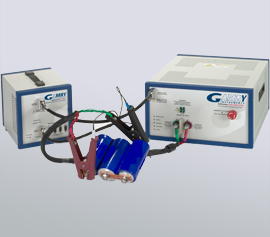
The Reference 3000 (AE) Potentiostat/Galvanostat/ZRA high performance and multi-purpose basic unit can be combined with the Reference 30k Booster and is ideal for evaluating new highest-level technologies for batteries, fuel cells, supercapacitors and high turnover electrochemical synthesis.
The Reference 3000 is already a high-performance system, but with the addition of the Reference 30k booster, it can serve even more demanding applications. You can therefore make a valuable contribution at the highest level in basic research, electrochemical synthesis, and electrochemical energy storage. The Reference 3000 basic instrument can either be equipped later with 8 additional auxiliary electrometers (AE; Auxilliary Electrometer) by means of a hardware upgrade, or you can opt for the Reference 3000AE.
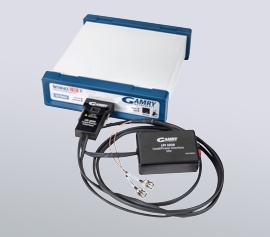
Interface for loads and power supplies for EIS characterization of batteries and fuel cells available in three versions (10 V, 100 V and 1000 V)
Alternatives to fossil fuel energy sources are becoming more and more prevalent, and fuel cells and batteries are playing an important role in energy storage and conversion of these alternatives. However, their future success depends on continuously improving efficiency and performance, which you can now do much better with Gamry's LPI1010 Load- / Power-Supply Interface.
POTENTIOSTAT - MULTI-CHANNEL SYSTEMS
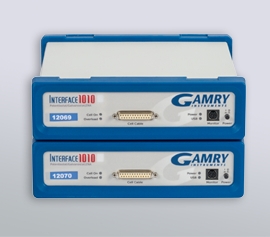
The Interface 1010 Bipotentiostat System from Gamry is compact, flexible, and inexpensive for all kinds of electrochemical measurements using two channels.
Each channel of the Interface 1010 bipotentiostat with its eleven current ranges including 10x / 100x gain record currents from 100 pA to 1 A at ± 12 V working electrode potential. The Interface 1010 Bipotentiostat is shipped including a special cable for synchronization. Since the systems are floating from protective ground, synchronous operation without mutual interference is possible.
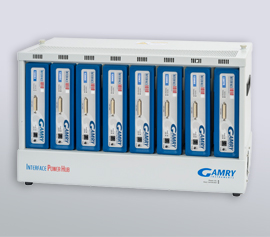
Multi-channel systems are ideal for any application where significance can be increased by higher experimental throughput.
With the multi-channel potentiostat from Gamry, a single system can be flexibly configured from many channels for research purposes with high significance. Flexibility means to operate each channel individually, in groups or all together. Each channel covers either a current range from 100 pA to 1 A (IFC1010) or from 500 nA to 5 A (IFC5000) and can maintain a maximum potential of either ± 12V (IFC1010) or ± 6V (IFC5000) at the working electrode.
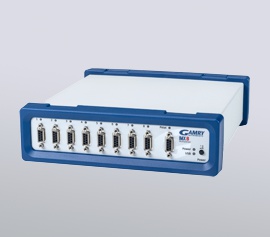
The IMX8 (Electrochemical Multiplexer) offers higher experimental throughput by performing automatic sequential measurements. With some limitations compared to multi-channel systems is a cost effective alternative for many applications.
With the IMX8, the throughput of electrochemical experiments in the laboratory can be increased from one channel to a total of eight channels within a reasonable budget. The ECM8 is the ideal additional system for the application field of corrosion inhibitor development, corrosion testing methods and their field tests, assessment of the impedance of coatings and development of chemical sensors.
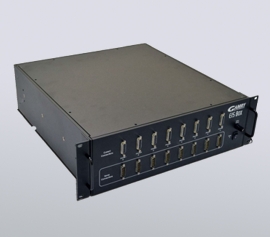
The Gamry EIS Box 1010 consists of an Interface 1010 base unit and an electrochemical multiplexer optimized for impedance spectroscopy (EIS) on batteries, fuel cells and super capacitors up to ±12 V.
With the EIS Box 1010, the detailed characterization of multiple batteries using the sophisticated method of electrochemical impedance spectroscopy (EIS) is intuitively possible and at the same time offers reliable results at high throughput. This efficiently accelerates tasks in quality assurance, material development and basic research of electrochemical energy storage devices.

The Gamry EIS Box 5000 consists of an Interface 5000 base unit and an electrochemical multiplexer optimized for impedance spectroscopy (EIS) on batteries, fuel cells and super capacitors up to ±6 V.
With the EIS Box 5000, the detailed characterization of multiple batteries using the sophisticated method of electrochemical impedance spectroscopy (EIS) is intuitively possible and at the same time offers reliable results at high throughput. This efficiently accelerates tasks in quality assurance, material development and basic research of electrochemical energy storage devices.
LABORATORY COURSE / TRAINING / TEACHING
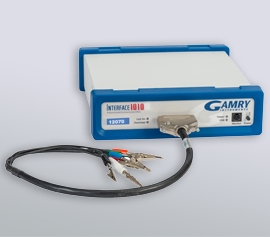
The entry-level electrochemistry package consists of 5 laboratory experiments with digitally available operating instructions and accessories as well as the Gamry System Interface 1010T Potentiostat/Galvanostat/ZRA - with this combination, the entry into electrochemistry is guaranteed to succeed at an attractive price.
Gamry´s Interface 1010T Potentiostat/Galvanostat/ZRA and Starter Pack reduce 11 available experiments in electrochemistry from the Laboratory Course to a cost-efficient 5 experiments in order to make methods and theories of electrochemistry available to an even wider audience in an efficient and comprehensive way. Within the package you will receive the support you need to familiarize yourself, students or employees with the various methods of electrochemistry.
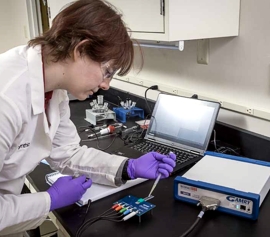
The Laboratory Course in Electrochemistry is a modular laboratory kit meant as a comfortable and understandable introduction to electrochemistry for students or research assistants.
Gamry´s Laboratory Course in Electrochemistry teaches the methods and theories of electrochemistry efficiently and comprehensively. With the combination of a Gamry system at an entry-level price, a basic kit and the choice out of a total of 11 individual laboratory experiments, you will receive the support you need to familiarize yourself, students or employees with the various methods of electrochemistry.
SOFTWARE

Gamry has developed its own software for each important application in electrochemistry and offers a very simple and intuitive handling through open source scripting, flexible and uncomplicated, even the customized experiment as well as with other programming languages such as LabView, C++, etc.
In a Gamry system, the electrochemical experiment consists of two separate operations, each in its own software environment. The recording of the measured data is done with modifiable scripts programmed in "Explain" in the Gamry Framework and their evaluation with modifiable Microsoft Visual Basic for Applications (VBA) scripts in the Echem Analyst.
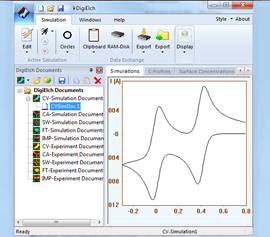
DigiElch is a simulation program with a unique selection of different functions for a variety of electrochemical experiments
With DigiElech, electrochemical reactions on typical electrode geometries, thin film electrode arrays and on two-dimensional microelectrodes can be simulated very accurately. The voltage drop due to the uncompensated electrolyte resistance or iR drop as well as charge and discharge currents through the electrochemical double layer can also be taken into account during simulation.
GAMRY ACCESSORIES FOR ELECTROCHEMISTRY
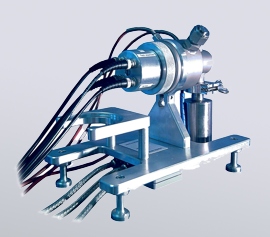
The MK 3 simulates with high accuracy typical fuel cell conditions for conductivity measurements via electrochemical impedance spectroscopy in combination with the Gamry System Reference 600+ or Interface 1010E.
The fumatech MK 3 conductivity cell is designed for measuring the proton conductivity and the general ionic conductivity of membrane samples in a temperature range from room temperature up to 200°C with an additional potentiostat. The measurements can be performed under selected humidification as well as in dry condition. Suitable potentiostats for operation with the MK 3 are e.g. the Gamry Reference 600+ Potentiostat/Galvanostat/ZRA or the Gamry Interface 1010E Potentiostat/GalvanostatZRA).
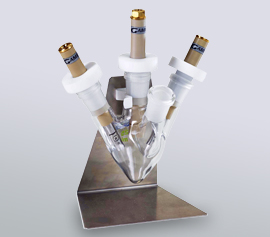
The design of the Lithium Battery Materials Cell Kit allows very flexible investigation of electrode materials of a lithium-based galvanic cell.
The Lithium Battery Materials Cell Kit is available in the versions "standard", "half-cell" and "whole cell" and enables very flexible mounting and dismounting of up to three electrodes made of foil, wire or bulk material in a lithium-based galvanic cell within a glove box.
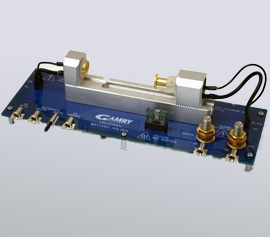
The all-rounder among battery holders - designed for cylindrical 18650 cells as well as button cells - with high flexibility in dimensions and connection options
With the Universal Battery Holder (UBH) a variety of batteries can be connected to all available Gamry Instruments systems - from Interface 1010 to Reference 3000 (AE) including Reference 30k Booster - with a true “four-terminal Kelvin-type” contact, cycled up to 30A and characterized in terms of their impedance.
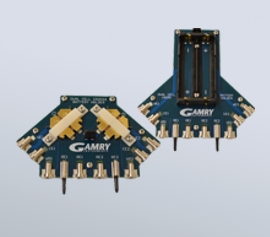
For electrochemical impedance spectroscopy on the coin cell types CR2016, CR2025 and CR2032 or on the cylindrical 18650 cell
Gamry´s Low Inductivity Battery Holder for cylindrical cells (18650) and coin cells (CR2016, CR2025 and CR2032) can reduce unwanted impedances due to the cable connection and contact impedances to a minimum thanks to the four-terminal Kelvin-type gold-plated contacts. The leads on the printed circuit board also ensure reduced inductive crosstalk with about 500 pH to 5 nH.
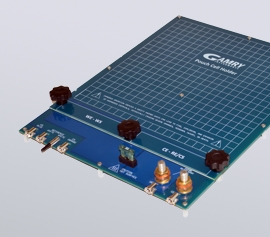
Flexible battery holder for pouch cells to characterize different types of pouch cells with different dimensions
With the Pouch Cell Holder a variety of pouch cell types can be connected to all available Gamry Instruments systems for reproducible and reliable measurement results with a true “four-terminal Kelvin-type” contact, cycled up to 30 A and characterized in terms of impedance.
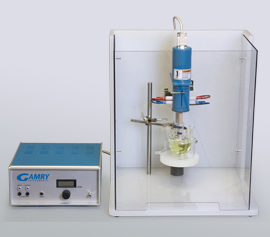
RDE710 Rotator for RDE, RRDE and RCE is designed for hydrodynamically controlled electrode reactions both for the characterization of catalysts and for determining flow-induced corrosion rates.
The RDE710 - Rotating Disk (RDE), Ring Disk (RRDE) or Cylinder Electrode (RCE) from Gamry is a fast DC permanent magnet motor with low inertia. Between 50 rpm and 10.000 rpm, a wide variety of materials in coordination with the shaft and electrodes can be controlled manually or digitally in conjunction with a potentiostat.
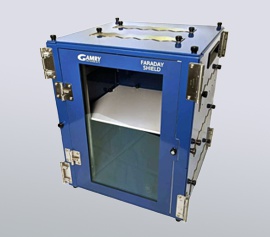
The successor to the Gamry VISTASHIELD continues to provide effective shielding from environmental electronic noise for demanding measurements at very low current levels and even with large measuring cells.
Like its predecessor, the collapsible Faraday cage offers efficient shielding from electrical interference signals from the laboratory environment (rotary pumps, fluorescent tubes, etc.). The spacious interior allows the accommodation of a wide variety of even larger electrochemical measuring cells such as Gamry's Dr. Bob's cell, voltammetry measuring cells or Gamry's multipurpose corrosion measuring cell. The cage can also accommodate an IMPS/IMVS setup for characterization of dye-sensitized solar cells or cells for spectroelectrochemistry from UV/VIS to NIR or Raman.
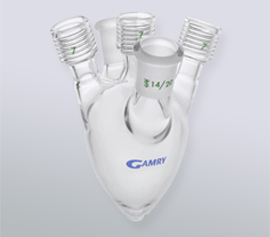
Dr. Bob´s Cell Kit is made entirely of inert materials and is used in a variety of applications to characterize unknown electroactive species.
Dr. Bob's Cell Kit can be used for various applications such as studies on enzymes and catalysts, electrochemical sensors, galvanic cells, redox potentials of inorganic complexes, etc. with micro and macro working electrodes made of platinum, gold or glassy carbon. Alternative electrode materials must be made available in holders of 110 mm length and diameters between 6.5 mm and 7.5 mm.
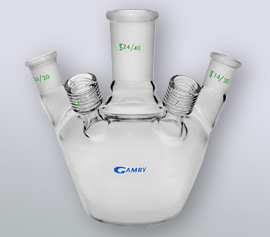
The Euro Cell Kit is the entry-level model for electrochemical corrosion measurements on cylindrical specimens
The Euro Cell Kit is designed for electrochemical corrosion measurements in 125 ml - 175 ml electrolyte volume. The components of the Euro Cell Kit have been selected for maximum chemical resistance, but nevertheless do not allow the use in hydrofluoric acid (HF) or in alkaline electrolytes.
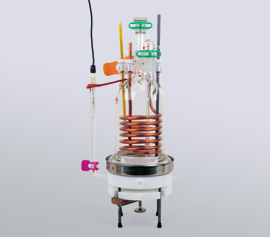
With Gamry´s FlexCell Cell Kit the critical pitting temperature is determined while avoiding the effects of crevice corrosion on flat specimens.
With Gamry´s FlexCell the critical pitting temperature on flat specimens can be determined with the flooded contact seal of "Avesta Steel" while avoiding crevice corrosion.
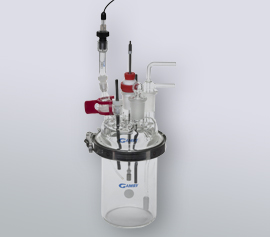
The design of the MultiPort Corrosion Cell Kit allows easy cleaning and a high degree of flexibility for electrochemical corrosion experiments on many sample geometries.
The MultiPort Corrosion Cell Kit is designed for ease of use, reliability and easy cleaning. In addition to electrochemical corrosion experiments at a constant temperature, the optional heating and cooling jacket also allows temperature-dependent investigations for better elucidation of the heterogeneous redox reaction system in an electrolyte volume of 1000 ml.
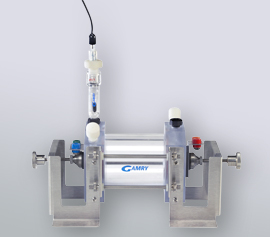
The ParaCell Kit for galvanic corrosion measurements and electrochemical noise measurements enables the investigation of many flat samples either against a graphite counter electrode or a second working electrode in symmetrical arrangement.
With the ParaCell Kit for Flat Specimen the working and counter electrodes are brought into contact with each other via the electrolyte capacity of 300 ml and identical electrode surface areas. Cell and electrode geometry meets the requirements for measurements of electrochemical noise as well as galvanic corrosion currents using a Zero Resistance Ammeter.
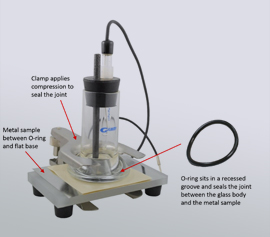
The Paint Test Cell Kit is the smallest and most cost-effective electrochemical measuring cell kit from Gamry.
For the investigation of corrosion processes on coated specimens or bare metal surfaces in masked surface areas, the Paint Test Cell Kit (PTC1) is so cost-effective that many users appreciate Gamry's smallest electrochemical cell with an electrolyte volume of approx. 40 ml also for the parallel investigation of several specimens side by side.
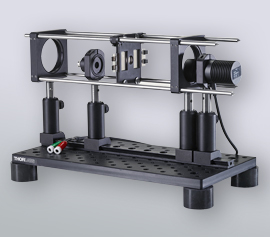
This experimental setup of a synchronized bipotentiostat and an optical bench is used for the detailed characterization of dye solar cells
For the characterization of Dye Sensitized Solar Cells (DSSC's) with the Dye Solar Cell Testing Kit (IMPS/IMVS) light from LEDs of discrete wavelengths (470 nm, 530 nm, 590 nm, 617 nm, 625 nm and 940 nm) is focused on the active area of the dye solar cell and the response to the irradiated light is measured. For electrochemical characterization, a bipotentiostatic setup is used in which one potentiostat drives the LED and a second potentiostat tracks the response by recording data...
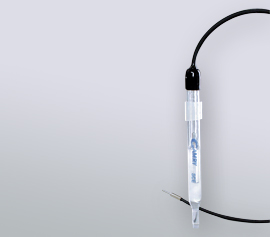
The selection of the correct reference electrode determines the quality for electrochemical measurement results and their lifetime.
High quality electrochemical measurements require a stable reference electrode potential and a low impedance reference electrode junction or frit. In contrast, inaccuracies in potential measurement due to an unstable reference electrode can cause erraneous results whereas a high impedance reference electrode frit in the range of several kΩ causes potentiostat oscillation.
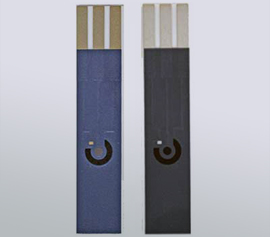
Working electrodes of different dimensions and inert materials
Screen printed-, macro and micro working electrodes for analytical electrochemistry and basic physical electrochemistry


